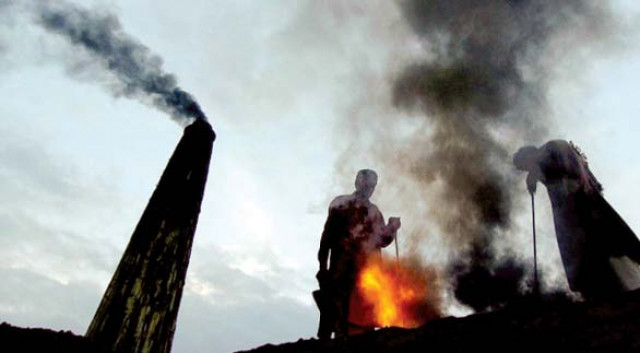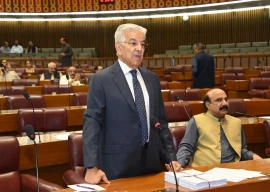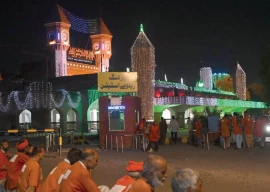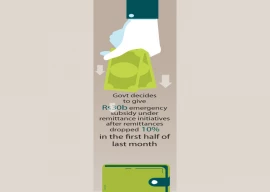
Since the Environment Protection Agency (EPA) continues to ignore violations, brick kiln owners are flouting the law by polluting the environment in Haripur district, which ranks amongst the most polluted areas of the province, owing to unchecked discharge of effluents in streams and emissions from industries in Hattar.
Haripur district houses over 200 brick kilns all of which bake bricks by using primitive technology to burn coal, according to official sources. Biogas, low-cost fuel, including waste oil, tyres, battery cases and animal dung are also used to fire bricks, causing significant air pollution.
Thick black clouds of smoke billowing out of chimneys in brick kilns can be seen hanging over surrounding areas. Hundreds of brick kiln workers including children and women are also exposed to health hazards as they continuously inhale the polluted air.
“These brick kilns have made our lives miserable; we can barely breathe,” said Saeed, a resident of Kangra Colony. The use of rubber and plastic items with coal pollutes the air, making it difficult for residents to breathe.
Emission of air pollutants like carbon monoxide, sulphur dioxide, nitrogen oxides and particulate matter for burning coal in kilns leads to respiratory ailments like bronchitis and asthma. These chemicals attack the body’s immune system, affecting its ability to fight infections, according to Javed Miandad Khan, a local environmentalist.
Dr Muhammad Gul Khan said poly-aromatic hydrocarbons are chemicals commonly found in smoke that cause vomiting, diarrhoea, eye irritation, nausea, and disorientation, while long-term exposure may result in liver and renal diseases and even cancer.
Ahsan Khan, an environmental activist campaigning against pollution, said under the Pakistan Environmental Protection Act, anybody causing environmental pollution could be penalised, but despite the fact the provincial EPA had not taken any action to check violations for reasons best known to its officials.
“Not a single Environment Protection Order has ever been issued to local brick kiln owners since the agency is not serious about controlling pollution.”
He suggested following the example of the federal capital, all brick kilns must be shifted away from populated areas and brick kiln owners should be bound to introduce environment-friendly technology.
“Brick kiln owners must be taken into confidence over the new technology.” The government can encourage them by extending carbon credit facility, he added.
When approached for comments, an official from the EPA’s office in Abbottabad, requesting anonymity, said despite being understaffed and challenged by a shortage of resource, his department was closely monitoring sources of environmental pollution in Hazara.
He claimed they would serve notices to brick kilns who were found violating the act.
Malik Ali Asghar president brick kilns association rejected the allegation that brick kiln owners use plastic and rubber to bake bricks.
“Brick kilns operate three to four months in summers and although we use primitive methods to bake bricks, we avoid burning rubber and plastic.”
He said there were 60 brick kilns in Haripur, sixty per cent of which were closed in winters. In reply to a question he said brick kiln owners were ready to cooperate with the EPA and non-governmental organisations for adopting environment-friendly practices.
“Brick kilns may be a minor source of pollution but the EPA has failed to check pollution created by industrial units in Hattar and fertiliser factories situated in the vicinity of Kangra.
Published in The Express Tribune, February 26th, 2012.





1732012115-0/Untitled-design-(14)1732012115-0-270x192.webp)











COMMENTS
Comments are moderated and generally will be posted if they are on-topic and not abusive.
For more information, please see our Comments FAQ